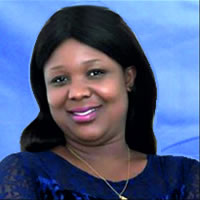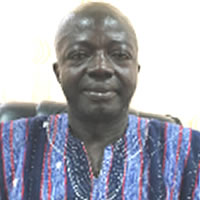Social Characteristics
Introduction
Knowledge of household structure, composition, and headship provides important statistical information for social and economic planning and the development of a community profile.
Household according to the 2010 PHC is defined as a person or a group of persons, who live together in the same house or compound and share the same house-keeping arrangements and constitute a single consumption unit.
This chapter provides an overview of the demographic characteristics of the district which includes household size, composition and headship, marital status, nationality, religious affiliation, literacy and education.
Household size, structure and composition
Table 3.1 indicates that there are 18,098 households in the Ayensuano district with nearly more than ninety percent (92.9%) in the rural areas compared with just 7.1 percent in the rural areas. The average household per house for the district according to the 2010 census is 1.5 with the rural areas recording a greater number than the urban areas implying that there are more persons in a house in those settings than in the urban areas.
The average household size for the district is 4.3 comparing with 4 for the region as a whole and interestingly the average household size for the urban area is same for the total district.
Household composition
Household composition is determined by people living together and their relationships to one another. This includes relationships such as spouse (wife/husband), child (son/daughter), grandchild, parent/parent-in-law, brother/sister, other relative and non-relative. 26
The percentage of households by composition and sex is presented in Figure 3.1 and Table 3.2. A greater percentage (41.2%) of household members is children of all household composition. Male children (sons) living with their parents have the highest percentage (43.7%) while adopted/ foster child has less than one percent (0.3%). This is followed by grandchildren who constitute 11.6 percent of household members.
Table 3.3 presents the percentages of households by composition by locality. The predominant (26.4%) household composition in relation to locality in the District is household with head spouse(s) and biological/adopted children only while the least (0.7%) household compositions is spouse(s) biological/adopted children relatives and nonrelatives of the head. This is followed by head only (18.6%). With the predominant household composition, it is important to note that rural areas have 26.5 percent whiles urban areas have 24.8 percent.
The least household composition by type of locality are households with head spouse(s) biological/adopted children relatives and nonrelatives of the head (0.7%) and households with head biological/adopted children relatives and nonrelatives of the head (0.7%). However, there are disparities between the two. Whiles the former has 0.7 percent in both urban and rural, the latter has 0.5 percent in urban and 0.7 percent in rural areas.
Household Structure
Figure 3.2 and Table 3.4 capture information for nuclear household (head, spouse(s) and their children), household that consists of single parent extended (spouse and child/ children and head’s relatives), or nuclear extended households.
The nuclear household (head, spouse(s) and their children) is the highest family type with a percentage of 31.1 whiles the single parent extended family with non-relative recording the least percentage of 1.3.
From Figure 3.2, female single parent extended (female head spouse living with children and relative’s households) constitutes almost 19 percent (18.8%) of the household structure whiles male single parent extended households is 14 percent.
Households made up of the head and his or her spouse, children and relatives of the head and other members who are not relatives of the head comprises only 1.5 percent of total households in the district.
Table 3.4 further indicates that 6.1 percent of males are heads only whiles 2.8 percent of females are heads only.
Marital status
Marital status by age group and sex
According to 2010 PHC, marital status refers to the respondent’s marital state as at the Census night. The question on marital status was asked only of persons aged 12 years and older.
In the District, almost 43 percent (42.9) of persons aged 12 years and above are married while 34.3 percent have never married. There is disparity between both sexes, of the male population 41.9 percent are married whiles 42.4 percent have never married. In relation to females, 43.9 percent are married whiles 26.5 percent have never married. About 12 percent of the married males fall between the ages 12 and 19 years and 16.4 percent for females between the same age group.
Nine percent of the population is engaged in informal/consensual union. This marital status is concentrated among males within 25-44 year group (11-16%) and females 20-44 year group (10-20%). From Table 3.5, 42.4 percent of men and 26.5 percent of women are single (never married). Those never married are highly concentrated in the younger age groups 12–24 years for men (70-100%) and 12-19 years for women (70-100%).
Table 3.6 shows persons aged 12 years and older by sex, marital status and level of education. The table indicates that majority (71.9%) of the district population aged 12 years and older with various marital status have basic education.
The table further shows that majority of the never married (83.2%) and married (68%) have basic education. There are 25.1 percent of married and 7.2 percent never married with no education in the District.
There is disparity in marital status between males and females in relation to level of education. There are more married males (72.6%) with basic education than females (63.8%). On the other hand, there are more never married females (83.7%) with basic education than males (80.6%).
Males and females never married with no education constitutes 7.1 percent and 7.2 percent respectively. On the other hand, married males and females with no education form 16.8 percent and 32.8 percent of the population 12 years and older respectively.
Marital status by level of education
Table 3.6 shows persons aged 12 years and older by sex, marital status and level of education. The table indicates that majority (71.9%) of the district population aged 12 years and older with various marital status have basic education.
The table further shows that majority of the never married (83.2%) and married (68%) have basic education. There are 25.1 percent of married and 7.2 percent never married with no education in the District.
There is disparity in marital status between males and females in relation to level of education. There are more married males (72.6%) with basic education than females (63.8%). On the other hand, there are more never married females (83.7%) with basic education than males (80.6%).
Males and females never married with no education constitutes 7.1 percent and 7.2 percent respectively. On the other hand, married males and females with no education form 16.8 percent and 32.8 percent of the population 12 years and older respectively.
Marital status by economic activity status
Data on persons aged 12 years and older by sex, marital status and economic activity status. From the table, 71.2 percent of the population aged 12 years and older are economically active (employed 68.6%, unemployed 2.6%) while 28.8 percent are economically not active. The table further shows that 91 percent of the married population is economically active (89.2% employed, 1.8% unemployed) whiles 9.0 percent is economically not active.
Among both sexes, females (71.3%) form the highest population who are economically active than males (71.1%) whiles the male population aged 15 years and older (28.9%) dominate the female (28.7%) population who are economically not active. There are 91 percent (90.1%) of married males employed with 87.7 percent for married females. On the other hand, about one percent (0.9%) married males are unemployed whiles for married females there are 2.6 percent.
Never married males (40.3%) and females (29%) constitute the least population who are employed. Among the female population, those engaged in informal/consensual union/living together constitute the highest (6.2%) unemployed category while with the male population those never married population (3.6%) is the highest.
Nationality
The nationality of the population by sex of the District is depicted in Table 3.8. The percentage of persons who are Ghanaians by birth represents the largest percentage of the population (96.7%). Female Ghanaians form the largest proportion of Ghanaians – Ghanaian by birth, Dual nationality and Ghanaian by naturalisation (98.7%). Ghanaians with dual citizenship and foreigners who are Ghanaians by naturalisation represent 1.5 percent and 0.4 percent of the population respectively. Almost two percent (1.4%) of the population in the District are non-Ghanaians
Religious Affiliation
Data on population by religious affiliation and sex is captured in Table 3.8. From the table, Christianity is the dominant religious group in the District with almost 84 percent (82.8%) of the population practicing the Christian faith which includes Catholic, Protestant, Pentecostal/Charismatic and other Christian. Islam and Traditionalists form only four and two percent of the population respectively. Almost ten percent (9.4%) of the population do not belong to any religious affiliation.
Table 3.9 shows that among the Christians the highest denomination is Pentecostal /Charismatic (39.2%).
This is followed by Protestants (23.9%), other Christians (16.5%) and Catholics (3.6%). Among both sexes, there are more females (93%) affiliated to the Christian faith than males (92.2%). On the other hand, with regards to the Islam and Traditionalist, there are more males (4.3%, 2.2%) than females (3.6%, 1.9%) respectively.
Literacy and Education
Literacy refers to the ability of a person to read and write in any language. Table 3.10 shows the literacy levels for persons aged 11 years and older by sex. Out of the persons aged 11 years and older, 20.3 percent are not literate in any of the languages whiles 79.7 percent are literate. Females constitute more than half (69.4%) of the illiterate population whiles the males are 30.6 percent. Table 3.9 also reveals that illiteracy is prevalent among older ages between 30 and 65 years and above (80.9%) whiles less among ages between 11-29 years (19.1%).
On the other hand, majority of the literate population falls between the ages 11-29 years (54.1%) whiles those between ages 30-65 years and above (45.9%) are less. The percentage of males (63.8%) who are literate in both English and a Ghanaian language is higher than that of females (55%).
Level of Education by School Attendance.
Table 3.11 presents the population three years and older by level of education, school attendance and sex. About 96.2 percent of the population is currently attending basic education which is made up of Nursery (8.7%), Kindergarten (17.1%), Primary (53.6%) and JHS (16.8%). The proportion of the population who has attained basic education in the past 36 constitutes about 91 percent. This is made up of Primary (27.8%), JHS (30.8%) and Middle school (32.3%). Less than one percent (0.5%) of the population currently attending school is from secondary to tertiary. This is far below those who have attained secondary to tertiary education in the past (2.2%).
Regarding gender variation, more males (52.5%) attended school in the past than females (47.5%). In relation to tertiary education, there is about twice educated males (12.1%) than females (5.8%). Currently, the population of males (53.8%) attending school at all levels of education is more than females (46.2%). This suggests that the attainment of education is skewed towards the male sex.
Information Communication Technology
Introduction
Information Communication Technology is the application of computers and telecommunication equipment to store, retrieve, transmit and manipulate data (Daintith, 2009). The influx of this technology has now made the world a global village which makes access to information easy. This chapter discusses the ownership of mobile phones by persons 12 years and older, access to internet facilities, individuals or households ownership of desktop/laptop computers as well as households’ ownership of fixed telephone lines.
Ownership of Mobile Phones
The ownership of mobile phones which was restricted to a small group of people in the past has seen great changes in recent times. The 2010 PHC posed questions on this in relation to persons 12 years and older. From Table 5.1, 16, 227 (31.6%) of persons aged 12 years and older has mobile phones. However, in the District, 38.3 percent of the male population owns a mobile phone whiles for the female population 25.2 percent own this same device.
Use of Internet
Table 5.1 shows that the use of internet facility in the District is not predominant as minority of persons 12 years and older use the facility. Table 5.1 shows that out of the total population of 51, 386 of persons 12 years and older, only 740 persons representing 1.4 percent use internet facility. This low figure may be as a result of the poor accessibility of internet facility. However, 2.0 percent of the male population use this facility while 0.9 percent for the female population.
Household Ownership of Desktop or Laptop Computer
The 2010 PHC gathered information on household ownership of desktop or laptop computers. Table 5.2 above shows that out of the total households of 18, 098, only 163 (0.9%) households either own a desktop or laptop computer in the District. The data in Table 5.3 shows that though the ownership of the facility is marginal in the District, it is mostly owned by male headed households. Whiles 1 percent of male headed households have this 45
facility; only 44 female headed households (0.7%) either own a desktop or laptop computer in the District.
Date Created : 11/23/2017 7:26:16 AM






 facebook
facebook twitter
twitter Youtube
Youtube TOLL FREE 0800 430 430
TOLL FREE 0800 430 430 +233 593 831 280
+233 593 831 280 GPS: GE-231-4383
GPS: GE-231-4383 info@ghanadistricts.com
info@ghanadistricts.com Box GP1044, Accra, Ghana
Box GP1044, Accra, Ghana